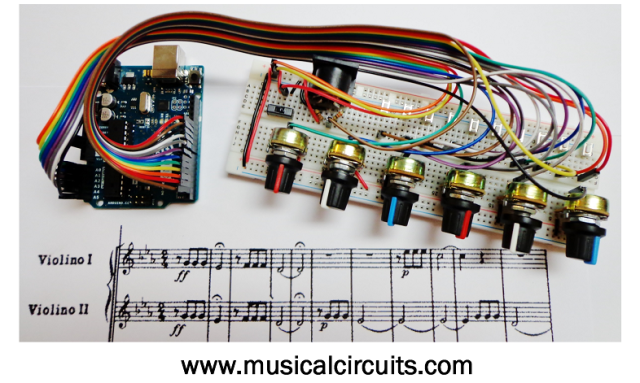Elliot Inman
 Elliot Inman has led workshops in electronics and creative coding on topics ranging from basic electronics and Python to Arduino programming, Fast Fourier Analysis, 8-bit chip synths, MIDI controllers, Audacity, and the Internet of Things. He developed and led the “Musical Circuits” series as Maker-in-Residence at UNC (spring 2016), “Quantification: The Art of Making Data” workshop series at NC State (fall 2016), and “Microcontrollers for the Rest of Us” at the University of Rochester (fall 2017).
Elliot Inman has led workshops in electronics and creative coding on topics ranging from basic electronics and Python to Arduino programming, Fast Fourier Analysis, 8-bit chip synths, MIDI controllers, Audacity, and the Internet of Things. He developed and led the “Musical Circuits” series as Maker-in-Residence at UNC (spring 2016), “Quantification: The Art of Making Data” workshop series at NC State (fall 2016), and “Microcontrollers for the Rest of Us” at the University of Rochester (fall 2017).
At Knobcon 2016, he presented “Experimental Music: Composing with an Arduino Midi Controller,” demonstrating unusual musical applications for a standard Arduino Uno. At Moogfest 2017, he led Musical Pencil CMOS Oscillator workshops. At Moogfest 2018, he led two workshops: one building an 8-bit wavetable circuit and another using Audacity to develop an imaginary soundscape. At Moogfest 2019, he led two workshops: the Sums of Squares Breadboard Synth and CircuitPython for DIY MIDI Controllers. He is an active participant in the Maker Faire scene, having presented at maker faires in Burlington, Charlotte, Greensboro, Raleigh, and Rochester, NY.
His musical roots began playing guitar, piano, and trumpet in various rock and jazz bands and writing pop songs. These days, his main musical interest is experimental music and improvisation with electronics designed to bend time and our expectations of what music can be.
He earned his undergraduate degree from North Carolina State University and his Ph.D. in Experimental Psychology from the University of Kentucky, completing his master’s thesis on Text Processing and a dissertation on Visual Perception and Learning. He works for a leading analytics software company designing software solutions with a focus on data visualization.
Musical Circuits (aka “Amateur Musicology”)
“Recklessly re-constructing music” is the purpose of the blog. The “re-” prefix became affixed to many different verbs during the postmodern era in which everything was considered to be a response to modernism. During that period, critics used words like “re-examination,” “re-presentation,” “re-evaluation,” and so on to make clear that what was happening was in response to what had already happened. “Re-constructing” is to construct something again, especially something that has been deconstructed. Music is “organized sound.” The purpose of this blog is to re-construct organized sound based on a scholarly study of music. Recklessly. It’s a post-postmodern thing.
Musical Circuits was presented at UNC-Chapel Hill as a series of workshops in Spring of 2016. The first workshop was with the UNC / Duke Experimental Music Study Group and focused on building the world’s simplest oscillator played with a Musical Pencil. Later that Spring, a series of workshops were conducted with the UNC Makerspace as part of a Maker-in-Residence program. Since then, we have done countless workshops, talks, and demonstrations of a wide variety of musical circuits, from CMOS synths to Arduino sequencers to circuit-bent musical toys and more.

Technical Notes
This blog is not intended to provide step-by-step instructions on circuit design. This is a place to document ideas and prototypes and save a few photos and videos from various workshops. Consider it one part instructables to four parts rejected art school thesis. Shaken, not stirred.
That said, every effort is made to ensure that technical information provided is accurate, safe, and helpful. If you find a technical error of importance in these posts, please contact: amateur musicology at gmail dot com and include TECHNICAL ERROR in the subject line so that we can address that issue.
Any quoted material, reference, or other content posted here that originated with another author, artist, composer, critic, scholar, or other content-creator is intended for scholarly purposes only. This website does not generate any revenue so posting such content would not benefit the site owner in any financial manner.
All content on Musical Circuits & Amateur Musicology, unless explicitly noted (author/artist citation or link), is the property of Amateur Musicology & Musical Circuits, painstakingly created to fit within the narrow functionality of this blog. Feel free to link to this blog any way you want – recklessly, even.
~WEI 2016, updated 2019

You must be logged in to post a comment.